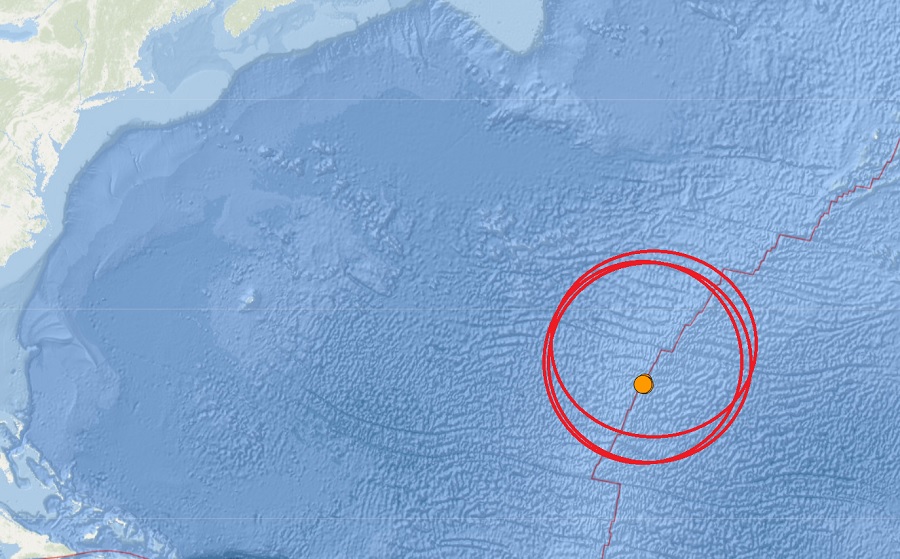
Three moderate quakes rocked the Mid Atlantic Ridge today; fortunately, they weren’t strong enough to generate any tsunami across the Atlantic; as such, there is no tsunami threat to the U.S. East Coast or the West Coast of Europe at this time.
The first earthquake struck at 4:41 pm and was classified by USGS as a magnitude 4.9 event. It struck at a depth of 10 km.
A second earthquake struck just five minutes later at 4:46 pm ET; it was rated by USGS as a magnitude 5.0 event.
The third earthquake, also a magnitude 5.0 event, struck at 4:49 pm ET; it too was at a depth of 10 km. All three earthquakes’ epicenters were near the same place.
These three earthquakes are the only quakes to strike this part of the Atlantic Ocean over the last 7 days. The last earthquakes to strike this area were in late February.

While the National Weather Service’s Tsunami Warning Center is monitoring for any tsunami threat, none exists.
The central Mid Atlantic Ridge separates the South American Plate from the African Plate. In this part of the world, the two plates are moving apart, triggering earthquakes as they split above the ridge.
These plates are based on the scientific theory of Plate Tectonics, which describes the large-scale motion of plates making up the Earth’s lithosphere. Scientists believe tectonic processes began on Earth between 3.3 and 3.5 billion years, building upon the concept of continental drift, a scientific concept developed in the early part of the 20th century. Continental drift is the gradual movement of the continents across the Earth’s surface through geological times.
Tsunamis are giant waves caused by earthquakes or volcanic eruptions under the sea. Out in the depths of the ocean, tsunami waves do not dramatically increase in height. But as the waves travel inland, they build up to higher and higher heights as the depth of the ocean decreases. According to the National Ocean Service, the speed of tsunami waves depends on ocean depth rather than the distance from the source of the wave. Tsunami waves may travel as fast as jet planes over deep waters, only slowing down when reaching shallow waters. While tsunamis are often referred to as tidal waves, this name is discouraged by oceanographers because tides have little to do with these giant waves.